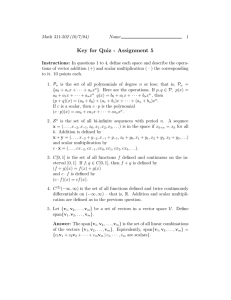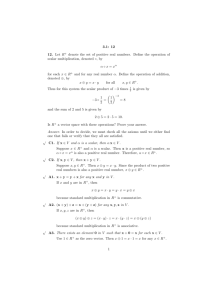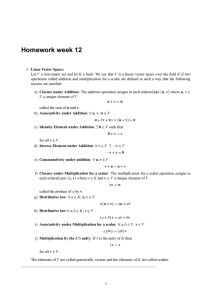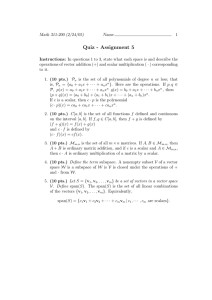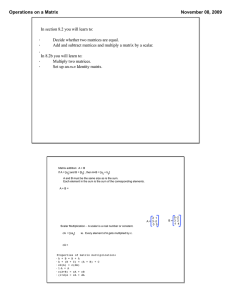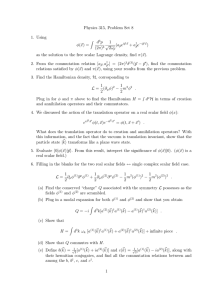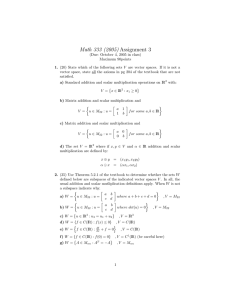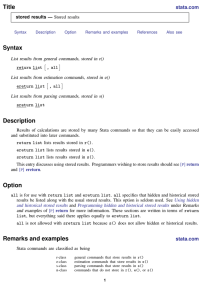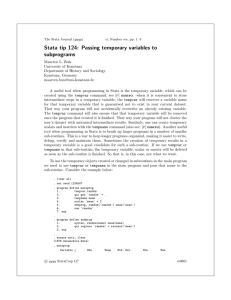2270-2, LINEAR ALGEBRA, DEFINITIONS IN CHAPTER 4, 02/15/2005
advertisement
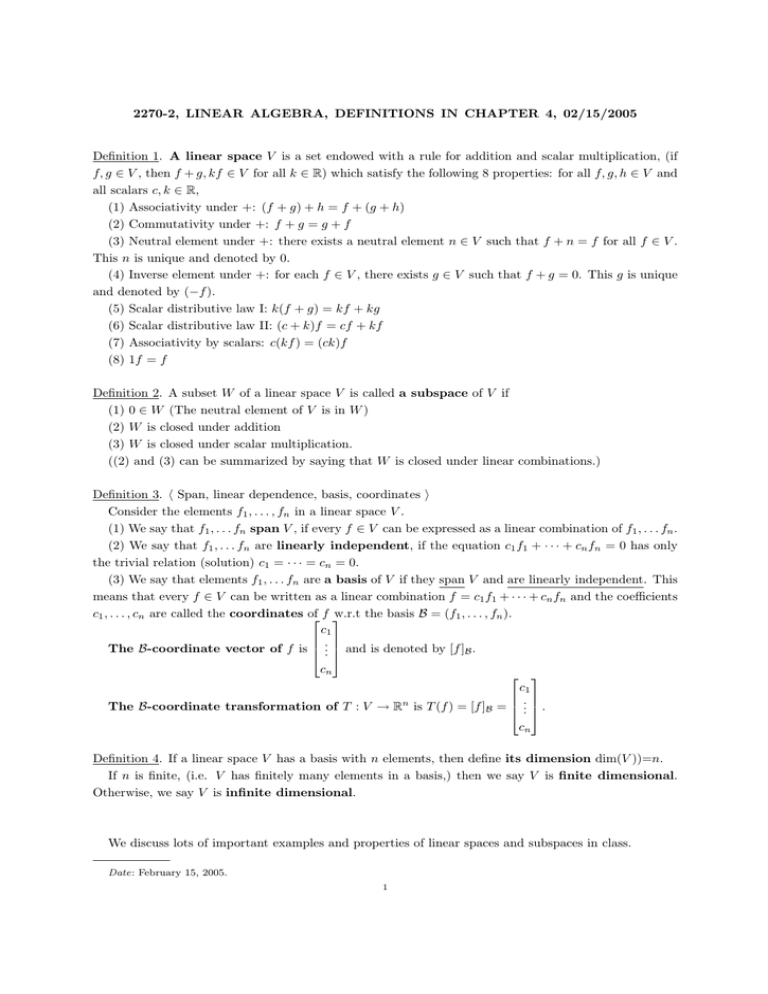
2270-2, LINEAR ALGEBRA, DEFINITIONS IN CHAPTER 4, 02/15/2005 Definition 1. A linear space V is a set endowed with a rule for addition and scalar multiplication, (if f, g ∈ V , then f + g, kf ∈ V for all k ∈ R) which satisfy the following 8 properties: for all f, g, h ∈ V and all scalars c, k ∈ R, (1) Associativity under +: (f + g) + h = f + (g + h) (2) Commutativity under +: f + g = g + f (3) Neutral element under +: there exists a neutral element n ∈ V such that f + n = f for all f ∈ V . This n is unique and denoted by 0. (4) Inverse element under +: for each f ∈ V , there exists g ∈ V such that f + g = 0. This g is unique and denoted by (−f ). (5) Scalar distributive law I: k(f + g) = kf + kg (6) Scalar distributive law II: (c + k)f = cf + kf (7) Associativity by scalars: c(kf ) = (ck)f (8) 1f = f Definition 2. A subset W of a linear space V is called a subspace of V if (1) 0 ∈ W (The neutral element of V is in W ) (2) W is closed under addition (3) W is closed under scalar multiplication. ((2) and (3) can be summarized by saying that W is closed under linear combinations.) Definition 3. h Span, linear dependence, basis, coordinates i Consider the elements f1 , . . . , fn in a linear space V . (1) We say that f1 , . . . fn span V , if every f ∈ V can be expressed as a linear combination of f1 , . . . fn . (2) We say that f1 , . . . fn are linearly independent, if the equation c1 f1 + · · · + cn fn = 0 has only the trivial relation (solution) c1 = · · · = cn = 0. (3) We say that elements f1 , . . . fn are a basis of V if they span V and are linearly independent. This means that every f ∈ V can be written as a linear combination f = c1 f1 + · · · + cn fn and the coefficients c1 , . . . , cn are called the coordinates of f w.r.t the basis B = (f1 , . . . , fn ). c1 . The B-coordinate vector of f is .. and is denoted by [f ]B . cn c1 . n The B-coordinate transformation of T : V → R is T (f ) = [f ]B = .. . cn Definition 4. If a linear space V has a basis with n elements, then define its dimension dim(V ))=n. If n is finite, (i.e. V has finitely many elements in a basis,) then we say V is finite dimensional. Otherwise, we say V is infinite dimensional. We discuss lots of important examples and properties of linear spaces and subspaces in class. Date: February 15, 2005. 1
